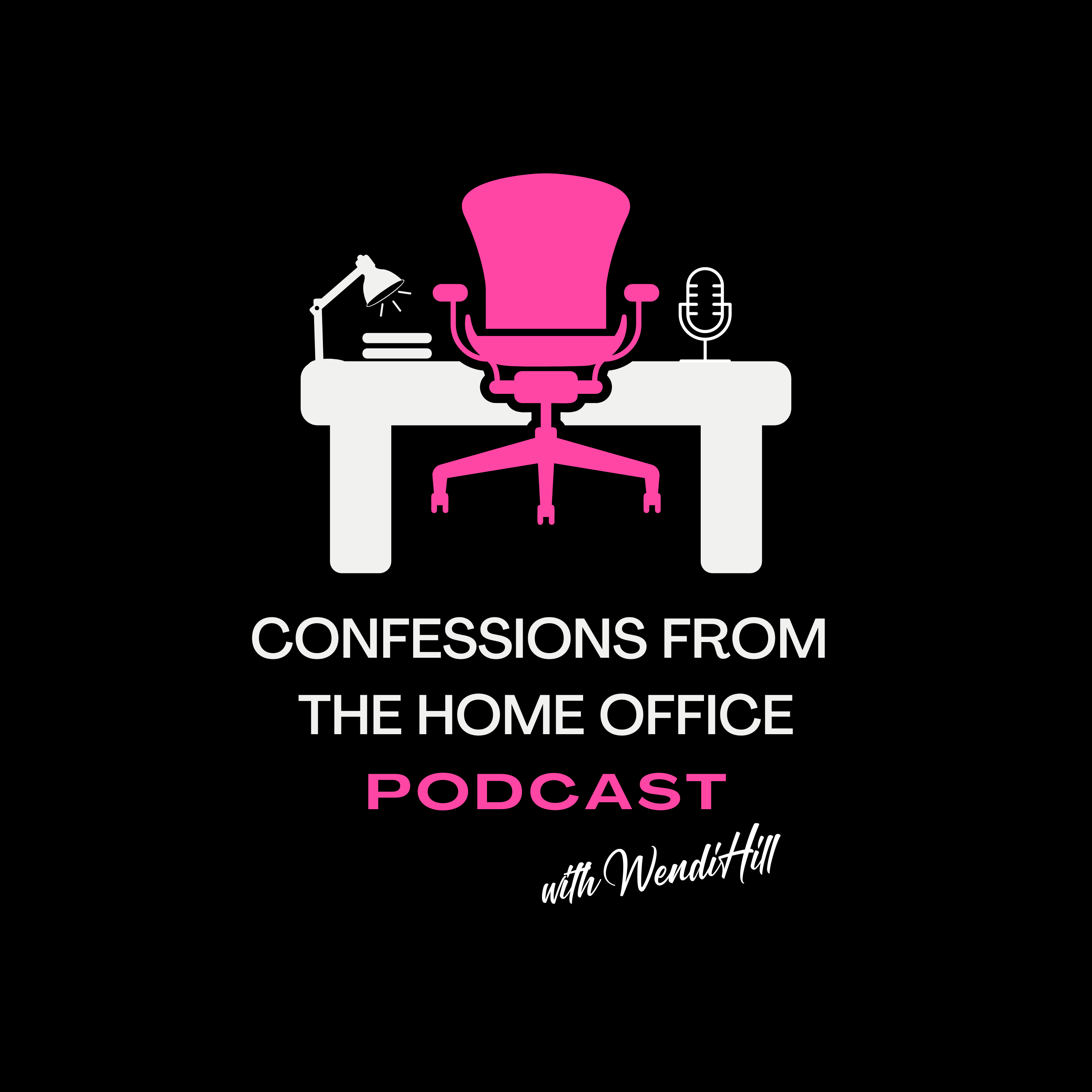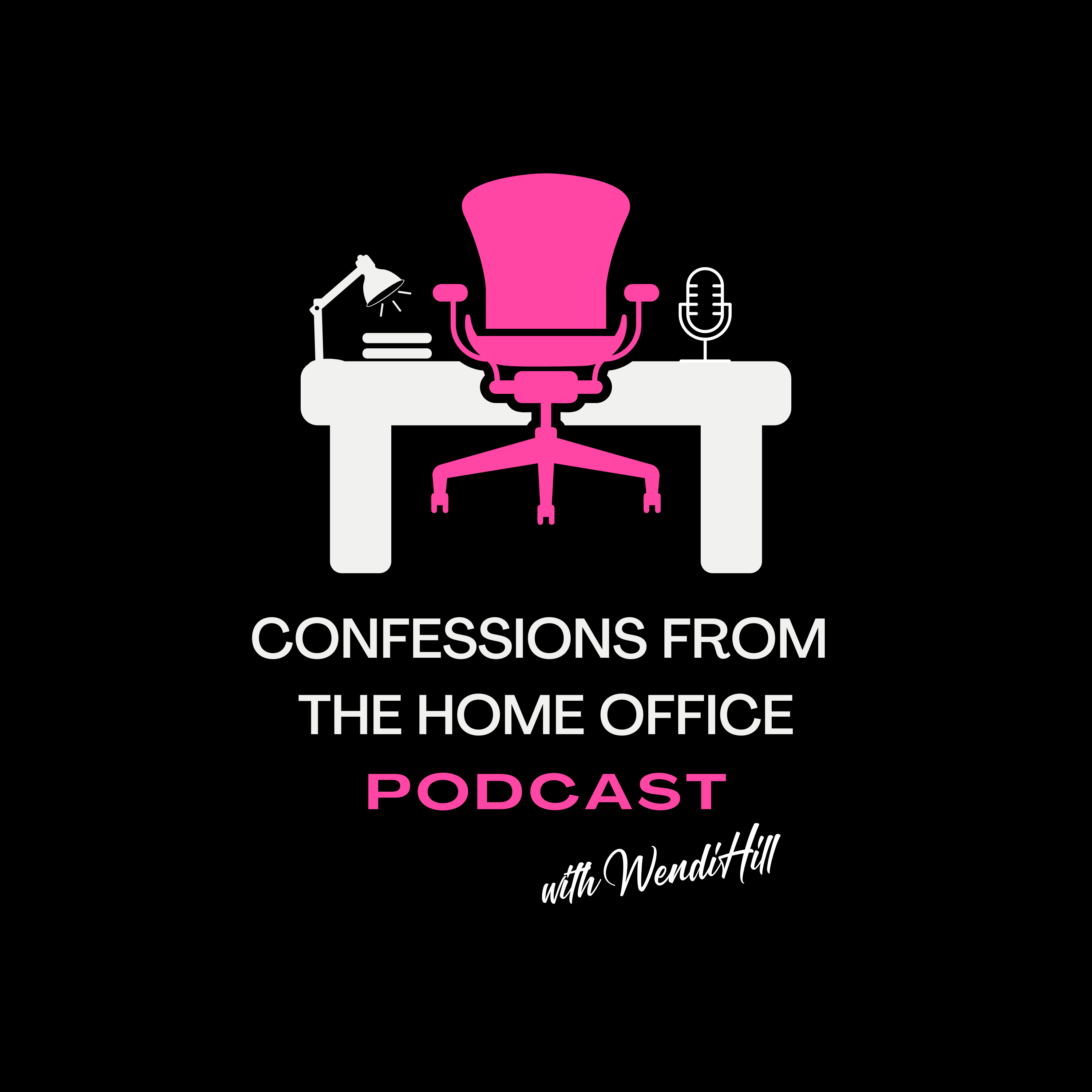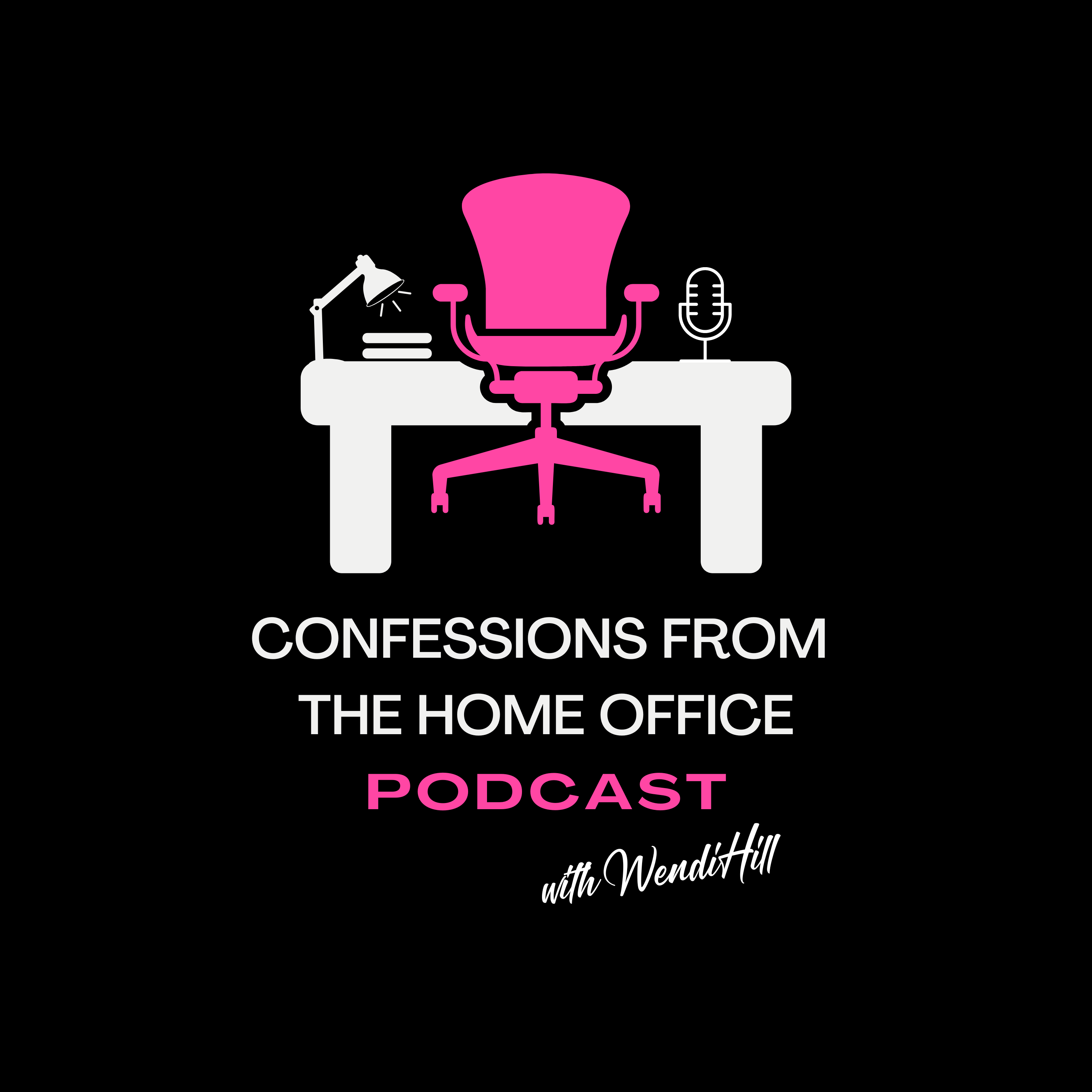Episode Transcript
[00:00:00] Foreign hi and welcome to the Confessions in the Home Office podcast. My name is Wendy Hill and for the past almost 20 years, I've been running a marketing consulting company out of my home office. So each week I create an episode about marketing topics about working from home, or I do an interview with another entrepreneur. So. So this week I have a question for you. Are you using YouTube to market your business?
[00:00:31] The more I use YouTube for clients, for myself, and keep learning about this platform, I am amazed. And I truly recommend that you consider YouTube as part of your marketing plan. So by the end of this episode, hopefully you'll understand why. But first, I have an ad from our sponsor, Patriots Beef Club. Whether you're grilling up burgers for the weekend, roasting a steak for dinner, or just craving that perfect cut, Patriots Beef Club has got you covered with USDA prime beef from family owned farms that share your values. And it's not just about great beef. It's about supporting American farmers, strengthening local communities, and keeping that true red, white and blue spirit alive. Plus, with flexible subscription plans, you'll never run out of top tier beef again. So I want to stop right here. We just got our subscription a couple of days ago and we've been getting the ground beef and the hot dogs for a couple of months. And it has changed how cooking and meals go around here. My husband is an excellent cook. Everything he makes is absolutely delicious. When he cooks with beef from Patriots Beef Club, it is off the charts great. It tastes better. I feel fine after I eat. I didn't realize that meat from the grocery stores was kind of making me feel weird afterwards. That has all changed. Just, I. I can't say enough about it. So the ones that we got this week came with ground beef, but also came with steaks. So I'm excited about that. And so you just do a monthly subscription and it comes a week or two later on dry ice. And it is fantastic. And the prices are really good too. So what are you waiting for? Join the club and experience what it means to eat like a True American. Visit patriotsbeefclub.com America Today and learn more about the packages available and get started. That's patriotsbeefclub.com forward slash America. Now back to our episode about YouTube.
[00:02:22] So every day people watch over 1 billion hours of YouTube content. Yes, I said 1 billion. And I looked it up and I looked it up again. And I looked up again. I looked up another place. Also the same thing. So every day people watch over 1 billion hours of YouTube content. I really don't know how that's possible, but I believe them. That's equivalent to 114,155 years of viewing time every day. About 720,000 hours of video are uploaded to YouTube every day. So that's equivalent to 500 hours of video being uploaded every minute. That's wild. And people of all ages watch YouTube. I see people let their kids watch cartoons and things on YouTube. I would say teens watch YouTube. My dad's 80 years old, he loves to watch YouTube. I'm not 80 years old. I love to watch YouTube. So anytime that I want to learn about something or learn how to do something or review or anything like that, I go to YouTube. And YouTube is not just a video platform. It is the world's second largest search engine. So Google's number one. Google owns YouTube. YouTube is a second. But unlike Google, YouTube is a search engine and a social media platform. So think about it.
[00:03:41] You go and you search for something, you can subscribe. If you're logged in, you can subscribe. So you get notifications when they upload something else. You can like videos or dislike videos. You can make comments, you can share them.
[00:03:53] Sometimes people have subscriptions. So you can get private, you know, special content and do that and pay for that. So that's how it, that's how it's a social media platform too.
[00:04:06] So over 50% of people use YouTube to do research on products before purchasing. So think about that. You put your service, your product out there, more people are going to see it and can learn about it instead of just having to go just to your website. So According to Google YouTube Shorts, those used to be the videos that were just like up to 60 seconds. They've expanded that now and it's now up to three minutes.
[00:04:32] YouTube shorts were watched by more monthly logged in users than videos on TikTok and Instagram Reels. So, you know, I know people are on TikTok all the time. I know people, my dad on Instagram all the time.
[00:04:47] So its viewership, YouTube shorts have increased by around 500 million users since 2022. That's huge.
[00:04:54] This is exactly why YouTube has become such a powerhouse tool for marketers, is where people go to learn, to be entertained and where they can go to, to decide to buy.
[00:05:04] Now you might be thinking, well, what about TikTok? TikTok's huge. And what about Instagram reels? Those are huge. But while those are great for short form content, YouTube can provide long form content. I mean, you think about podcasts. This podcast is not just A couple of minutes. It's usually 10, 15, 20, 25 minutes. Think about huge podcasts that are out there. I was listening to one today in the car. It was three hours. It'll take me a couple days to get through.
[00:05:30] But just long form videos, educational content. You can't get everything you need just in a TikTok or an Instagram reel. YouTube's a great place to put that. So the regarding watch time. An average YouTube session is over 40 minutes. And you think that's crazy. I don't do that. But think about it. You watch a video and then you see something else on the side that's recommended for you. You may click over and watch that and time flies. Think about all the rabbit holes you can go down on on YouTube and you may end up watching hours of stuff on TikTok or Instagram. But it's just in short bites. It's just enough to kind of, to pique your interest. Um, and you're not getting all the information.
[00:06:15] And then second of all, think about YouTube's targeting capabilities. They know who to show the video to. They know about you. They're owned by Google. Think of all the data they have for Google Ads and just how much they're collecting on us by our search histories.
[00:06:31] So it's really sophisticated and it's, it's going to get in front of the right people.
[00:06:38] And then also unlike other platforms like Facebook and Instagram where you can go out and you can post and you can have other people tag you, mention you to help grow your following, a lot of times you have to do pay for, pay to play to really grow your following over time. And if you're doing that, your numbers are looking good. When you stop doing that, the numbers slow down. YouTube content can keep driving traffic for years.
[00:07:08] They also have great ad programs. I've used them. I'm really impressed by them. Even more so than Facebook and Instagram ads. But with YouTube, the content stays up there, just has a longer shelf life. And I'll tell you about a client that I have and a law firm. We've been doing videos now close to five years, probably four and a half years or so. And they're here in the Southeast. They get clients from different parts of the United States. Even though their videos are tagged for the state that they're in, they get calls from other places because people have businesses in the state where they are or they have relatives in the state where they are, and they get calls on videos that we put out four years ago. Those videos have thousands of views. And when they ask, where did it come from? I found your video on LinkedIn. I found your video on YouTube. All the videos on social media are linked back to YouTube. Um, but it's helped them get a ton of business and some of it has been big business stuff. That's, that's long term. So you know, we have some social media posts and we do things like that. But the YouTube content has been fantastic.
[00:08:19] We make sure we tag the videos with really good keywords, keep the titles and description simple. But we have call to action, we have all the contact information in there. So when someone goes out and ask a legal question, mentions a legal topic, there's a good chance they're going to find them. So you may be thinking, all this sounds great. How am I going to do all this? How am I going to get all this together? This sounds like a huge project to do and you do have to do some planning with it. But once you get in a routine it can, it can be great. And the good thing about YouTube is people were doing all these like really fancy videos or really funny videos or really quirky videos. The trend now is straightforward content. I think we've all kind of had enough of all the craziness. It's fun to watch but if you're going out looking for something, you just, you just want the goods, you just want the information so you don't have to be crazy or hire super high end production companies to do your videos.
[00:09:15] So let's talk about channel setup. Let's get this broken down into some steps. Every Gmail account has a YouTube. You can add a YouTube channel to it. So if you have a Gmail or you can go create a Gmail, you can go from there and set up your YouTube. There's five elements you need to optimize your channel name. Make sure it's a name that people understand what it is and that they're going to. So when they see it, they'll know it's something they need to look at. Write a good description. It doesn't need to be super long, but it needs to be clear, has the right keywords. Don't use words that people aren't going to understand.
[00:09:51] Keep it simple. You need to have channel art so that your profile picture that or a profile picture for your product or brand and there's like a banner picture and, and they, they walk you through and tell you how many pixels it needs to be. The dimensions. And so that's pretty easy. And then I want you to Create a channel trailer. There's a trailer with this podcast. I created a video and put it out the day we were headed out for our honeymoon. It had probably been created a couple weeks and I let that run for a couple of weeks. I kept promoting it, promoting it and got some subscribers, people asking about it. And when I got back and got settled, then I started creating the content for the podcast and from there. So a trailer is kind of like the promo or the, the movie trailer. But it doesn't have to be anything crazy. It's just kind of saying this is what's coming, this is what we're doing, and this is where you can find us. And then start looking at the playlists like there's shorts and you can for YouTube shorts. And then you can have different playlists for different topics and get that set up. So I want you to think through relevant keywords. I want you to keep titles but descriptive. I want you to have calls to action in your description for everything. If your video is long enough, put in timestamps so people, if they need to flip through, was listen to a podcast today and saw these timestamps and I thought the next three guests she has on, I don't want to hear that, but I want to hear number four. So I knew right where to jump to. And that's always really helpful.
[00:11:15] You can turn on the closed captioning. So if people are at work and they're not supposed to be watching YouTube, they can still watch it with captions. Or if someone's hearing impaired, they can, they can still read the video and see what's going on on. If you're going to use thumbnail graphics, like the COVID art graphics for each video, you can make those in Canva or you can make those in PowerPoint, upload those and include your branding. So you think, well, what do I need to start with? I'd start with a short. After your trailer, I would start with like a three to five minute video. Put it up, do all these things.
[00:11:46] Use a 16 by 9 aspect ratio and make sure if you've got some captions on there. If you put some notes in on the video, make sure the text can be seen, that the font's not crazy, the color's not crazy. It's really clear that the, the images look good, the video quality is good.
[00:12:04] And then you think, well, what else? What am I going to talk about? Like, how do I do the content strategy and figure out. I would do more educational, answering questions, frequently asked questions, addressing pain points that type of thing. More often I would throw in some entertaining, fun things just to kind of keep people on their toes or to kind of show the softer side of your brand, your company or whatever, and then keep monitoring and see what works. So another client, we were, we were doing some podcasts and we saw these certain topics they were getting tons of views on. But then when they were kind of talking more about basic core things where they had started the podcast, they weren't getting as many views, so they realized that people are really looking for the other. So they've gone in another direction for right now.
[00:12:48] So that's, that's what I would do and that's what I've done with clients and know that you can always adjust. Um, the great thing about a video is if you hate it, you can delete it or you can always re record it or redo it, or you can just leave it out there because it's got good descriptions and keywords. Make sure you, you put in your tags down near the bottom. There's a place where you can add different keywords. Do that. That really helps.
[00:13:13] So to wrap it up, let's talk about what you can do next. I want you to think about, do you already have any video content you can put up there? If so, do it. Get it started.
[00:13:24] If you don't, go ahead and get your YouTube channel set up and use all the tips that we covered and think about your content calendar. That doesn't have to be anything crazy. That can be on a piece of paper. You can do that on a spreadsheet and figure out how often you're going to create content, how often you're going to put it up. And I want you to just start with one video and make sure you do a good job with that. Do your trailer, do one video, and then I want you to be consistent. That's what I talk about with people all the time. Dropping off does not work. People just think they're not, they're not really here, they're not really interested. Get consistent. Like, this podcast is something I have to do every week and if I know, know I'm going to be really busy, I need to go and do two and get ahead. So, and just keep an eye on your analytics. So if you found this episode valuable, I'd like for you to leave me a comment or like subscribe, share it with somebody, leave a review. It really helps other people find the show. So if you have questions about anything or need any help, send me an email. Wendy W E N D I wendyhill.com and I'll see you next week. That's it from Confessions from the Home Office.


